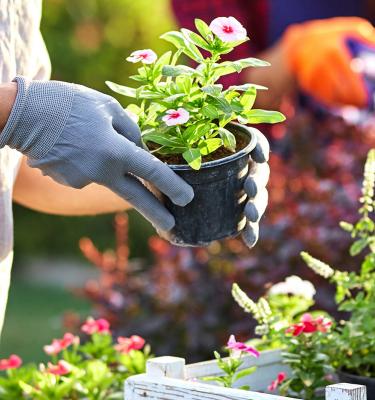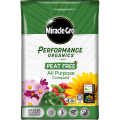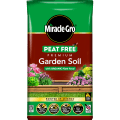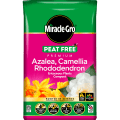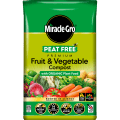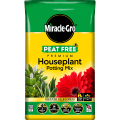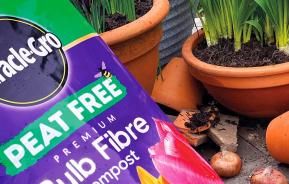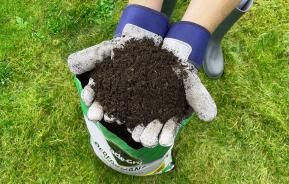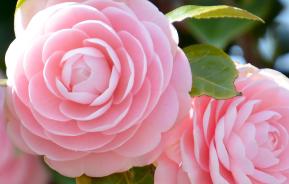Compost is the foundation for healthy plant growth. A good compost will contain nutrients, air and water retaining ingredients and anchorage to provide stability for plants roots.
Some people are able to make their own compost. This usually means having large compost making bins or specially built bays where plant materials such as stems, flowers, vegetable peelings, grass clippings etc are added and allowed to decompose after a period of time.
For the majority of people however, compost is what they buy in bag which is then added to the border or bed or used to plant up pots or containers.
Different types of compost
Choosing the right type of compost for your plants depends on several factors, such as the type of plants you're growing, the soil type, nutrient requirements and where in the garden you will be using it.
Compost choice can be broken down into types of plants and specific tasks, but we’ll start with the most common type of compost…
Multi-purpose or all-purpose peat free compost
As the name suggests, this compost has many uses. A good quality peat free compost such as Miracle-Gro Premium Peat Free, can be used for pots and containers, planting in beds and borders, sowing larger seeds and taking cuttings as well as for growing fruit and vegetables. Multi-purpose compost can contain feed that lasts anything from 6 weeks to 3 months and has an open, airy structure with good water retention.
Seed and cutting peat free compost
Although you can use multi-purpose compost for seed sowing, you will get much better results if you use a dedicated seed and cutting compost. This will be finer with less nutrients and will usually contain sand or fine grit, allowing the delicate roots of seedlings to grow down easily into the compost.
The higher nutrient levels in multi-purpose compost can scorch fragile seedlings. Smaller seeds such as chillies and tomatoes should always be sown first in seed compost and then moved into multi-purpose compost once they have grown.
John Innes peat free composts
These are a soil-based compost that can be broken down into 3 stages:
- John Innes No.1 – for seedlings and cuttings
- John Innes No.2 – for planting small vegetables and plants in containers
- John Innes No.3 – for mature plants or those in permanent planting positions
John Innes composts have more weight than multi-purpose due to the grit and loam within them so are an excellent choice for larger shrubs or trees that will be planted permanently in pots. The nutrient levels go up from no1 to no 3, providing the feeding requirements for the different stages of the plants.
Peat free mulches and soil improvers
These are used on beds and borders, traditionally in the autumn or spring to help keep in moisture, suppress weeds and add nutrients. Although not all mulches are specifically a compost many of them will be found in the compost area of a garden centre or DIY store.
Using a specific mulch rather than a multi-purpose compost tends to be a much better option when mulching a large area. Soil improvers can be used in most areas of the garden including as a lawn dressing before seeding a new lawn or just to improve the structure of the soil. Most soil improvers can be used as a mulch, but their main objective is to improve structure and make a clay soil easier to work with and a sandy soil richer in nutrients.
The types of mulch and soil improvers that you can buy can include:
